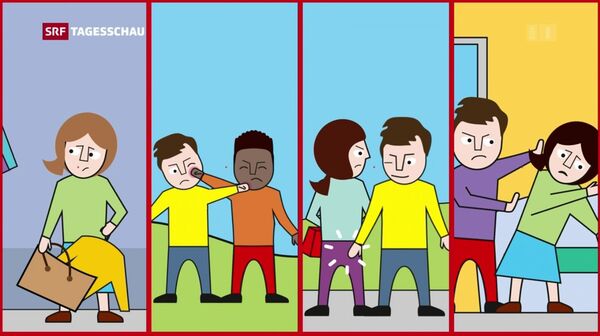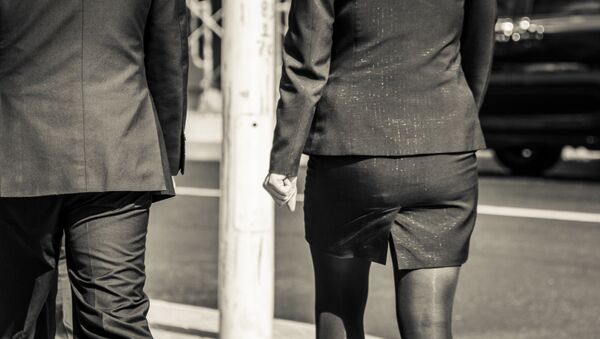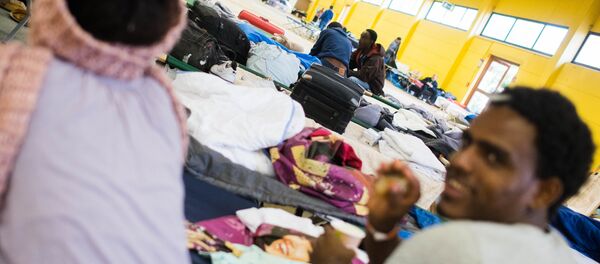The course includes videos and brightly-colored brochures in nine different languages, showing asylum seekers the "dos and don'ts" of living in Switzerland.
The police say they want to "break down fear of the police" among refugees, explain to them the rights and responsibilities of Swiss society and the circumstances in which law enforcement have to interfere.
Of particular concern for the police are violent offenses, littering and public disorder, since they receive a disproportionate number of complaints regarding these offenses committed by refugees.
#KantonspolizeiBern informiert #Asylsuchende mit Video, die SFH hat sie dabei beraten. https://t.co/1LfvhninRl
— Flüchtlingshilfe (@sfh_schweiz) 21 мая 2017 г.
Police officer Michael Fichter, who is running the pilot course in a refugee center in Riggisberg, told the Swiss broadcaster SRF that the course is necessary to bridge the cultural differences between the refugees and their hosts.
"The people here have a completely different background. When we talk about the Sun, we see it as something positive. When they talk about the Sun, it is about drought, suffering, death. Perhaps they crossed the desert in order to seek asylum. We are not talking the same language," Fichter said.
The colorful brochures try to get the refugees to understand in simple terms how they are expected to behave in Switzerland. However, the police found the refugees' interpretation of the pictures did not always correspond to what was expected.

The Fluchtlingshilfe Schweiz [Refugee Help Switzerland] charity told SRF that the course has been a success, and thinks it should be rolled out across the country.
"It is certainly not enough just to make flyers and films. The local police are going directly into the asylum accommodation and making contact with people in order to build trust," a spokeswoman told SRF.
Per capita, Switzerland received more asylum seekers than most other European countries: there were 3.4 asylum seekers per 1,000 Swiss inhabitants, exceeded only by Germany [9.8], Greece [5.1], Austria [5], Malta [4.5], Luxembourg [3.6] and Hungary [3.2]. The average for Europe last year was 2.5 asylum seekers per 1,000 inhabitants, slightly less than the figure of 2.6 in 2015.
Never miss a story again — sign up to our Telegram channel and we'll keep you up to speed!




